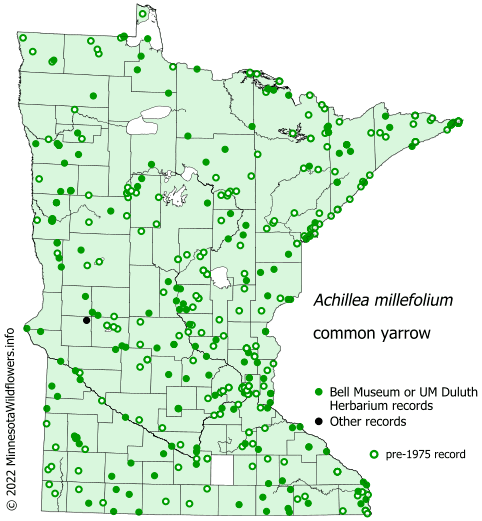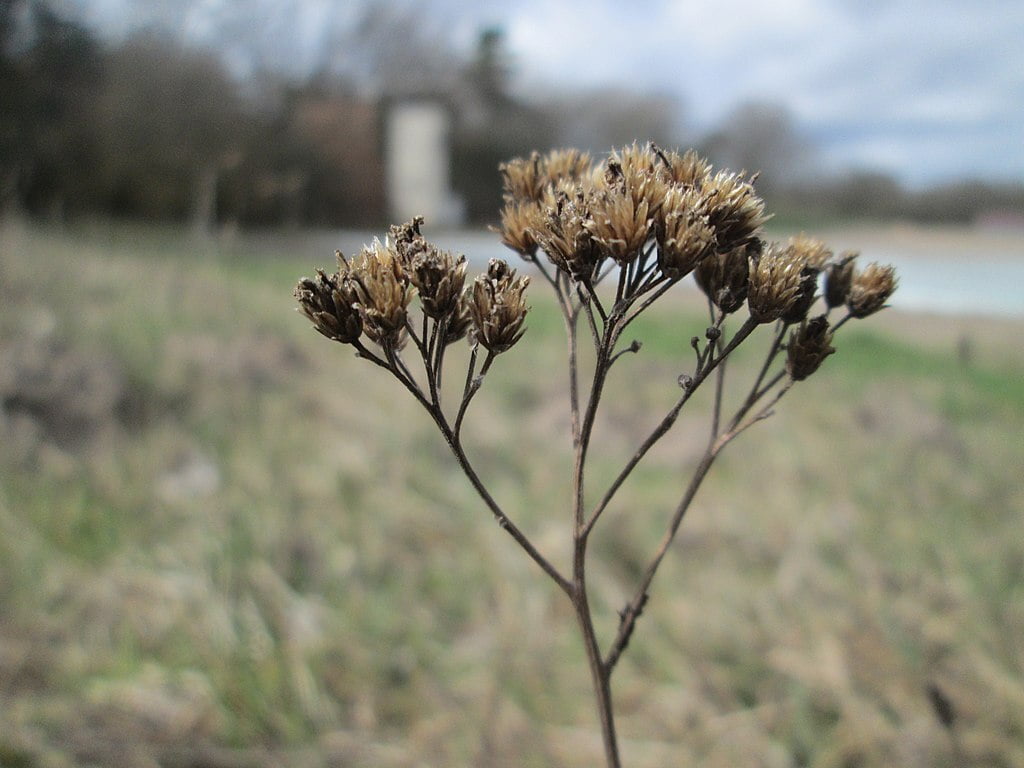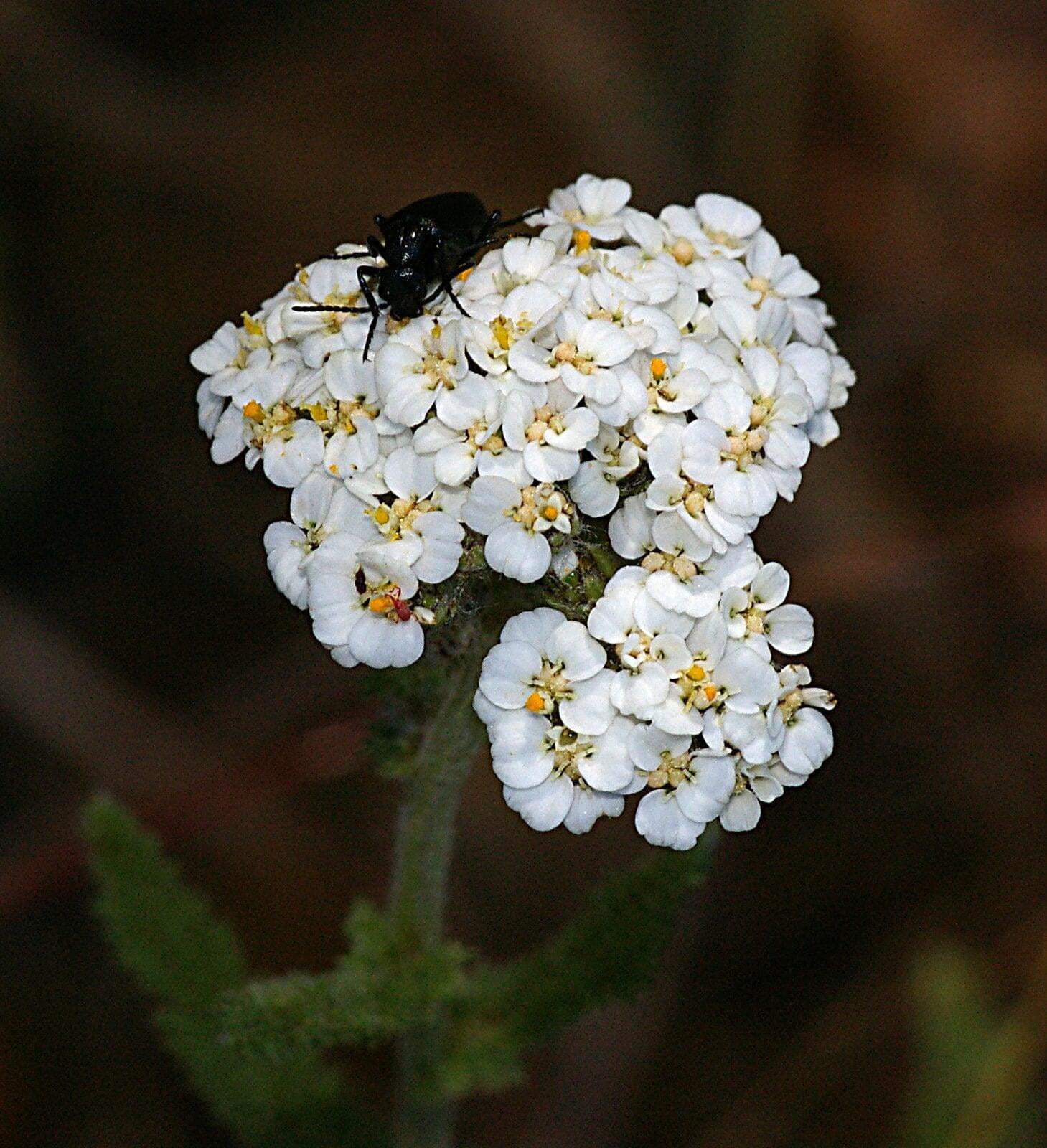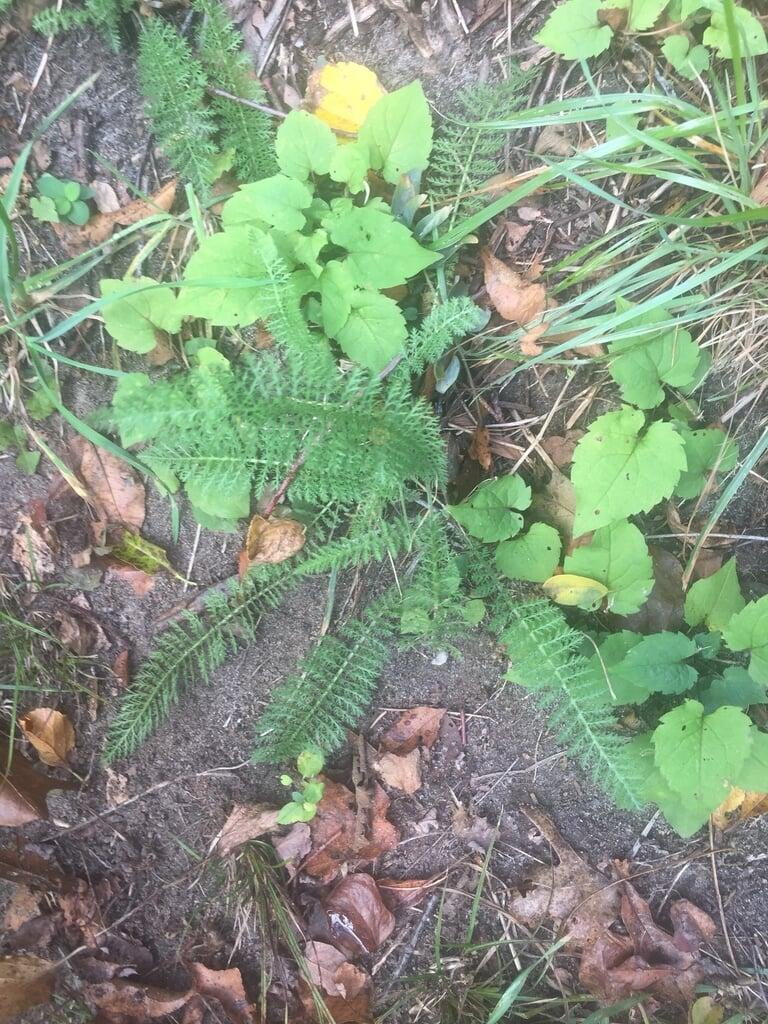Achillea millefolium
Common Yarrow Description:
Achillea millefolium, commonly known as yarrow, is a herbaceous perennial plant in the sunflower family. It is native to the Northern Hemisphere and is widely distributed in Europe, Asia, and North America. Yarrow is a hardy and versatile plant that is known for its fern-like leaves and clusters of small, white to pink, flat-topped flowers that bloom from late spring to early fall. The plant has a long history of use in traditional medicine for its astringent, anti-inflammatory, and antiseptic properties. In addition to its medicinal uses, yarrow is also commonly used as a ornamental plant in gardens and landscaping due to its attractive foliage and flowers. The plant is also often used in wildflower meadows and in butterfly gardens to attract pollinators
Native Range:
Yarrow is a native plant across the entire continental United States, and can be found in every county in Minnesota.
Standard Plant Information:
Plant height: 1' - 3'
Bloom time: June - September
Preferred habitat: Does well in part shade to full sun. Often found in prairies, open woodland, and roadsides.
Host plant for: Painted Lady butterfly.
Stratification Code: NA
Sowing:
For most homeowners, the best option is to scatter seed on the ground by hand broadcasting at a minimum of 16-64 pls ounces per acre. For even coverage, we recommend that you broadcast seed in perpendicular rows across the site to ensure even coverage.
You’ll want to broadcast any grass seed first, which will get raked into the soil lightly. Next, it is ideal to mulch the area lightly with either a clean (no seed) straw or preferably with our native Little Bluestem straw, sold at our retail garden centers. After a light mulching is complete, now it’s time to broadcast your native wildflower seeds, which should not be raked into the soil. A good rain or watering is sufficient to cover the seed.
Planting:
Simply dig a hole in the soil slightly larger than the plant’s roots. Ensure that the soil line of the plant is maintained during the transfer (i.e. the plant should be at the same level with the ground as it was in the pot). Pack any loose dirt back around the plant and make sure you water it well the same day to ensure it has the best chance of survival.











